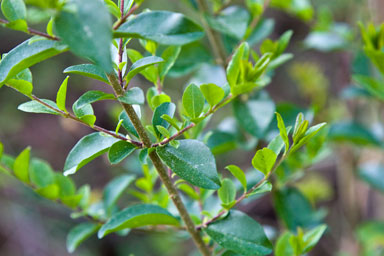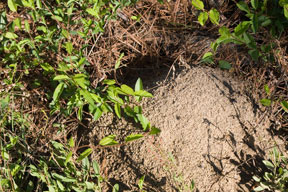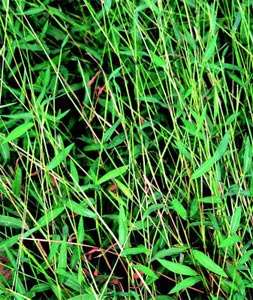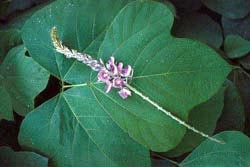Exotics
An exotic species is one that is not native to a given ecosystem. Exotics are often introduced from one country into another. Exotics often harm the environment. The term invasive is used to describe exotics that reproduce rapidly and cause major disturbances to the areas to which they are introduced. Additional information about invasive and exotic species is available from the Center of Invasive Species and Ecosystem Health.
Information about exotics is available from the Georgia Exotic Pest Plant Council's web site. The council publishes a brochure with the names and pictures of non-native invasive plants that pose problems for natural areas in Georgia.
Featured Exotics: Privet, Fire Ants, Nepalese Browntop, Kudzu, and Japanese Honeysuckle.
 |
Privet
(Ligustrum spp) Privet is a semi-evergreen shrub in the genus Ligustrum used for hedging. This member of the olive family can form dense thickets 5 m (15 ft) high. The small flowers give rise to clusters of purplish-black fruits that are eaten by birds. Privet does not occur naturally in North America, thus it is an introduced invasive species that likely came from China. It spreads quickly and displaces native species. Privet is prevalent along the creek. |
 |
Fire Ants
(Solenopsis invicta) Fire ants are stinging ants that build large dome-shaped mounds in the open. Fire ants feed on seeds and small insects. If disturbed, fire ants attack small animals as well as humans. Fire ants inject a toxic alkaloid venom called solenopsin. Their venom results in a painful sting that feels like "fire" and itches. Sensitive individuals can go experience a life-threatening allergic reaction that results in nausea, swelling, and difficult breathing. Fire ants likely came into the United States on a South American cargo ship through the a port in Alabama in 1918. It has now spread through most of the southeast. Fire ant mounds are found along the sewer line fields. |
 |
Nepalese Browntop
(Microstegium vimineum) Nepalese browntop is a sprawling annual grass native to Asia that can grow up to 3.5 feet in height. Stems usually droop. It is a common invader of forested floodplains. It is shade tolerant and can displace native vegetation over time. Nepalese browntop was accidentally introduced into North America around 1920. It was used in the past as packing material for porcelain and that may be the original way that its seeds came over to the United States. |
 |
Kudzu
(Pueraria lobata) Kudzu is a semiwoody climbing vine that is native to Japan and China. It was introduced into the United States in 1876. Kudzu was deliberately planted in the southeastern United States on about one million hectares from 1920 to 1950 as livestock feed and by the Soil Conservation Service for erosion control. Growing conditions for Kudzu are excellent in the southeast and the plant soon began to spread uncontrollably. Kudzu forms dense mats over the ground and up trees. Kudzu outcompetes and crowds out most other plants. It has few natural predators. Kudzu develops a deep and extensive root system and is hard to eradicate once established. Kudzu is a legume that increases the availability of nitrogen in the soil, hence enhances its fertility. Kudzu can be eaten by grazing livestock. Kudzu leaves are alternate with 3 long and broad leaflets. Clusters of purple flowers appear from June to September. |
 |
Japanese Honeysuckle
(Pueraria lobata) Japanese honeysuckle is native to eastern Asia. Honeysuckle was introduced into the United States in the mid-1800's as an ornamental for gardens and for erosion control. It is a major invasive species in the United States and difficult to control once it spreads into an area. Honeysuckle is a perennial vine that climbs by twisting its stems around almost any vertical structure. Honeysuckle outcompetes and displaces native vegetation. Dense growths of honeysuckle can gradually kill plants by blocking sunlight. The tubular flowers are fragrant and contain a tiny drop of honey-flavored nectar at their base. Flowers bloom from late April through July. Honeysuckle thrives in fields, forests, wetlands, and all types of disturbed areas. |
